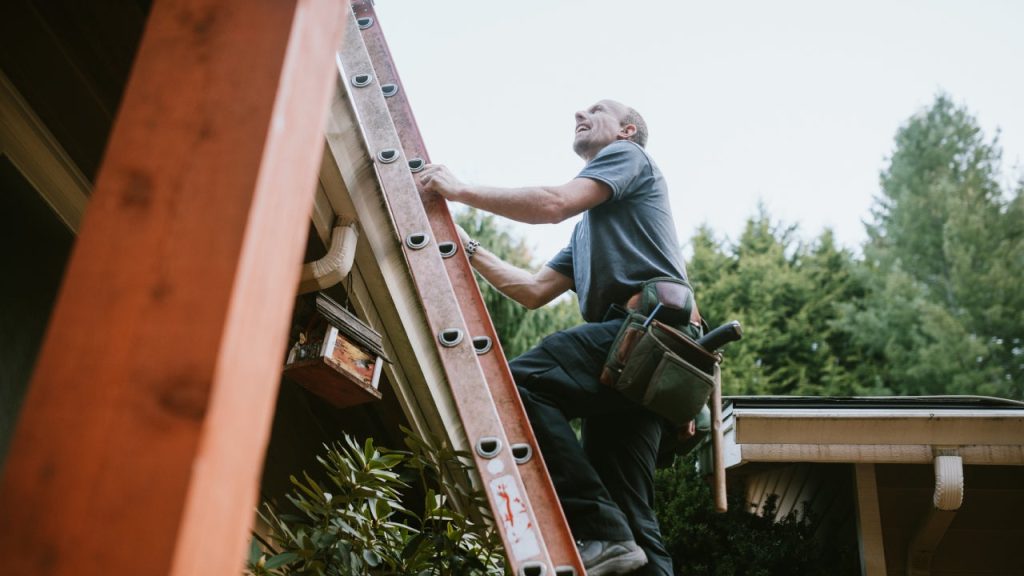If you’ve ever had a homeowners insurance policy, then you may have had a roof inspection before. During these inspections, a licensed inspector is sent to assess the integrity and general condition of your roof and its various components. A roof inspection for insurance is a common practice that home insurance carriers undertake when writing a policy. You can also have your roof inspected independently of insurance companies, but this is less common. What the roof inspector finds can help you and your insurer evaluate how long your roof will likely last before needing repairs or replacement. This, in turn, often helps to inform aspects of your policy and the premium you can expect to pay.
What is a roof inspection?
When an inspector comes out to take a look at your home’s roof, they are essentially calculating how long the roof will last until it needs to be replaced. An insurance company needs to do this in order to calculate how much of a risk your roof is to insure. If your roof is in poor condition, you will probably pay a higher premium, or you may even have some difficulty getting your home insured until you repair or replace it.
Although an inspector may actually climb to your roof, often with a roof inspection for home insurance, the inspector is able to ascertain your roof’s condition visually from a distance of the ground or a ladder. During a professional roof inspection, drones might be used to view your roof so the inspector may not need physical access to the roof at all.
However, your roof’s shingles are not the only aspect an inspector assesses. Your roof has additional components to it outside of its protective layer. An inspector also looks at the condition of the following during an inspection:
- Roofing material (shingles, metal, etc.)
- Flashing
- Gutters
- Vent pipe covers/ boots
- Caulking
- Signs of water intrusion/ mold on the inside
Do you need roof inspections for home insurance?
If you live in an older home or an area that receives many storms, your insurance company will likely require a homeowners insurance roof inspection. This is because your roof is your home’s first line of defense against Mother Nature. No matter what the weather is like, your roof needs to be able to sustain it. If it fails, it can cause a domino effect of other issues within your home — including roof leaks and interior water damage — which equates to an insurance company having to pay out more in a claim if something happens. Your insurance is designed to help protect your finances after certain losses, but insurance companies still expect you to mitigate as much damage as you can. This includes keeping your roof in good condition.
When estimating the coverage you need, keep in mind that standard homeowners insurance policies generally come with actual cash value (ACV) roof coverage. This means that depreciation is taken out of any claim settlement you get; if your roof is in poor condition, your claim payout will be less than what it would be if your roof were in pristine shape. In other words, the insurance company will only pay for what the roof is worth at the time of the claim, and not the actual cost to replace it with a new one, which would be more expensive.
If you want replacement cost coverage for your roof, you may be able to add it by endorsement. Just be aware that replacement cost coverage generally costs more than ACV coverage, but it may be worth the additional premium.
Ordinance and law coverage can also help protect your finances from the added cost of improving your roof with better quality materials required by local building code changes.
You may be required to get your roof inspected when:
The benefits of roof inspections
Separate from not needing to get on your roof yourself for evaluation, hiring a professional roofing contractor has many benefits.
A roof inspector can typically spot any of the following:
- Damaged shingles
- Deteriorating flashing
- Gutter/ downspout issues
- Leaks
- Mold
- Wood rot
The earlier issues are discovered, the sooner you can fix them and potentially spare yourself the stress of further damage. The best part is that a required roof inspection should not cost you anything. If an insurance company has ordered an inspection as part of the underwriting or claims process, you won’t be required to pay out of pocket. You’ll only have to pay for an inspection that you initiate. However, having your roof inspected every few years may be a good idea — even though hiring an inspector this often likely requires an out-of-pocket cost. It may help you save on your homeowners insurance quote in the long-term.
When you stay on top of your roof’s needs, you are more likely to increase its longevity. No roof lasts forever, but if you address hiccups as they arise, the chance of your roof experiencing a massive failure is greatly lessened. Ultimately, roof inspections can be a helpful tool that benefits you, as a homeowner.
Frequently asked questions
-
No, a roof inspection and a roof certification are not the same, but they are similar in that they are both used to ascertain a roof’s value and condition.With a roof certification, the inspector is looking at more than just a roof’s condition. The inspector will still determine the roof’s value and lifespan but also looking at the following:
- Age of the roof
- Number of layers on a roof
- Square footage of the roof
- Type of roofing materials used
- Pitch of the roof
- Quality of previous repairs
This means that when you get a roof inspection report from a certified roof inspector, you’re getting a number that you can use to plan and prepare for future repair costs. With an inspection, the report isn’t as detailed or as specific.
-
When your roof fails a home insurance inspection, there are a few possible outcomes. The insurer may cancel your policy or deny you coverage. It may also impose exclusions, which are certain instances in which the policy will not cover a claim. You could also be given the option for homeowners insurance coverage if you make necessary repairs or renovations. If the roof fails the inspection but there is no sign of imminent failure or damage, the insurer might be able to provide coverage by excluding a claim related to the roof. If a company refuses to insure your home due to its condition, you may need to find a different company willing to take on the risk or look for high-risk insurance options. If your home is old, you may want to consider purchasing home insurance specifically made for older homes.
-
Completing regular roof inspections can be helpful, especially if you live in an area prone to natural disasters or severe weather. Most professionals recommend having a roof inspection twice a year: during the spring and fall. Although you do not necessarily need to call an inspector to do a roof inspection each time, you’ll want to be sure you’re looking for the right things if you decide to inspect the roof yourself.A few things to look out for include:
- Broken shingles
- Clogged gutters
- Damaged chimney caps
- Damaged shingles
- Loose gutters
- Low spots
- Missing chimney mortar
- Missing shingles
- Moss covered shingles
- Rusted flashing
- Termite damage
- Tree debris
- Worn out rubber boots that cover roof pipes or projections
It’s also recommended to inspect your home after a heavy storm. If you need a roof inspection for homeowners insurance, keep in mind that you’ll have to have it completed by a licensed inspector.
-
Much of the damage that can occur to a roof is visible, although you may need a ladder to see some of it. From the outside of your home, you may be able to identify missing shingles, a sagging roof structure, loose flashing around your chimney, damaged shingles and other visible signs of wear and tear. From inside your home, you might spot signs of a bad roof by noticing water damage on your ceiling. Any of these observations could indicate a need for roof repairs or replacement.
Read the full article here










